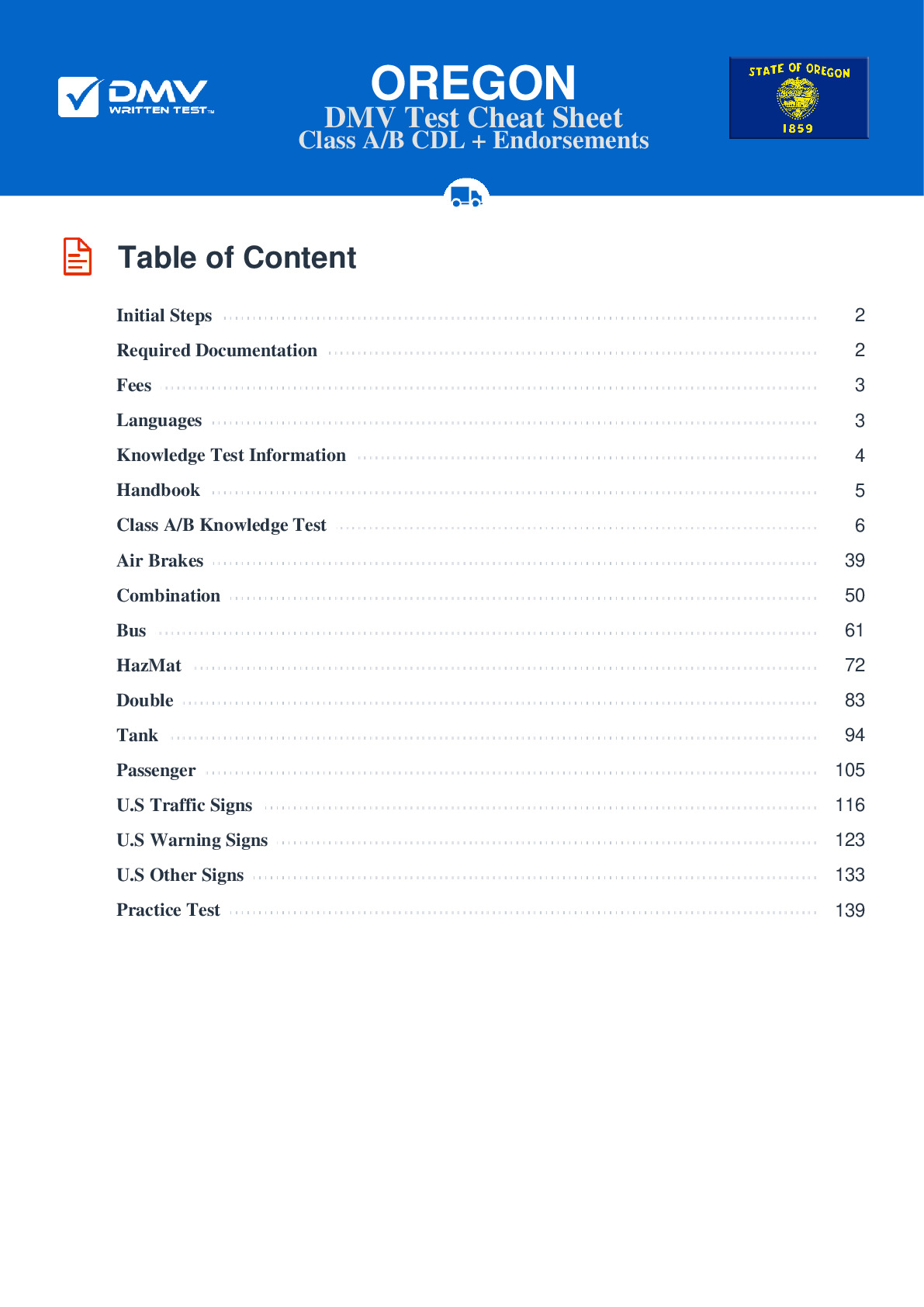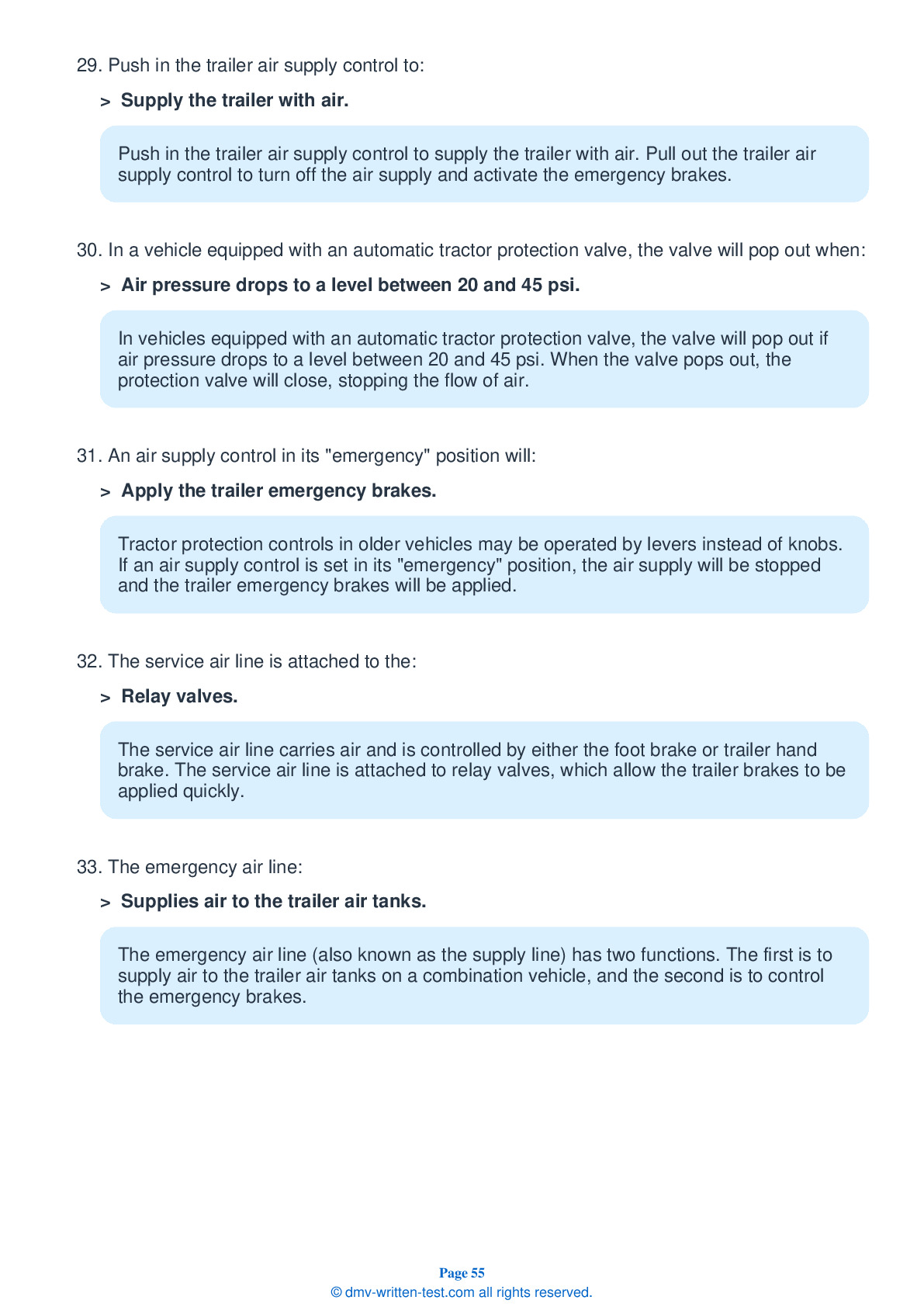Combination
All applicants who are applying for a Class A CDL should be prepared to take the Combination test. This test covers information found in Section 6 of the Oregon Commercial Driver Manual. Section 6 provides the information needed to safely operate tractor-trailers, doubles, triples, and straight trucks with trailers. The test is made up of 20 multiple-choice questions, and applicants will need to correctly answer a minimum of 16 questions to pass. The Combination test is not a replacement for the Double/Triple endorsement test.
Number of Question
Passing Score
8. The trailer hand valve should be used:
Explanation
The trailer hand valve should be used only to test the trailer brakes. It should not be used while driving because it may cause the trailer to skid.
9. If you are operating a vehicle built before 1998 and are unsure if the trailer has an Anti-Lock Braking System (ABS), you can:
Explanation
If you are operating a vehicle built before 1998 and are unsure if the trailer has an Anti-Lock Braking System (ABS), you can check under the trailer for wheel speed sensors coming from the back of the brakes.
10. When a vehicle goes around a corner, the rear wheels:
Explanation
When any vehicle goes around a corner, the rear wheels follow a different path than the front wheels. This is called off-tracking. The degree of off-tracking will be greater on long vehicles than on short vehicles.
11. To find out if a vehicle that was built before 1998 has an Anti-Lock Braking System (ABS), you can:
Explanation
If you are operating a vehicle built before 1998 and are unsure if the trailer has an Anti-Lock Braking System (ABS), you can check under the trailer for wheel speed sensors coming from the back of the brakes.
12. If a load is placed on one side of a trailer, the trailer:
Explanation
If the weight of a load is placed primarily one side of a trailer, the trailer may lean, increasing the risk of a rollover.
13. What can the “crack-the-whip” effect do?
Explanation
The "crack-the-whip" effect can cause a trailer to turn over during a lane change. To avoid this phenomenon, drivers should make lane changes at slow, safe speeds.
14. When connecting a converter dolly to a second trailer, the trailer height should be ____ the center of the fifth wheel.
Explanation




